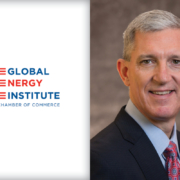Utilities: Our Country’s Powerline
Stable, reliable and cost-effective energy prices are key factors that spur economic growth across the nation. Over the years, economic growth has boomed in some regions of the country in large part because of low-cost, reliable electricity provided by the local utility company. That’s why utility companies play a major role in the economic development of American communities. They are strategic partners that help promote job creation and drive local economic development.
This effort happens for a number of reasons, but key among them is the fact that communities and businesses depend on reliable and cost-effective energy to support their day-to-day operations. As manufacturers consider building new or expanding existing manufacturing facilities, energy costs are a critical consideration. Local energy suppliers provide valuable resources to help manufacturers make those important investment and resource allocation decisions.
Additionally, utility companies are not only strategic business partners, but also community partners investing in organizations, schools, and sponsoring other philanthropic activities that further contribute to the health and vitality of a regional economy.
This month, we are examining the impact utilities are having in growing local and state economies. We will hear from the Tennessee Valley Authority, the nation’s largest public utility, that was recently honored by Site Selection Magazine for its success in business attraction and retention. We’ll also hear from the Economic Development Partnership of Alabama, which is an organization established with strong support from utilities to advance economic development efforts. We will also share perspectives from the National Association of Manufacturers and the U.S. Chamber of Commerce’s Global Energy Institute on how utilities play a vital part in creating a stronger and more competitive business environment for all.
–Gloria Story Dittus, Chairman, Story Partners





